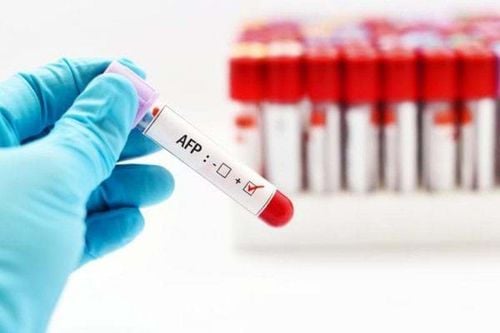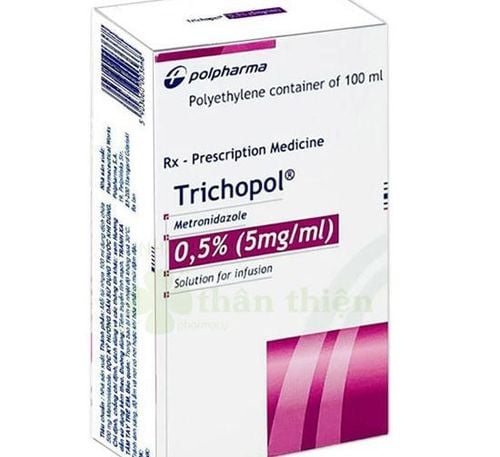This is an automatically translated article.
Anaerobic bacteria are those that are capable of causing disease under anaerobic conditions. The culture test will help identify anaerobic bacteria and limit errors in the process of using antibiotics to treat the disease.
1. What are anaerobic bacteria?
Bacteria are divided into several groups, based on their existence in the air during growth, including: aerobic bacteria, anaerobic bacteria and facultative anaerobic bacteria.
Anaerobic bacteria or anaerobic bacteria are those that do not require oxygen in the process of growth and development, they can react abnormally or cannot live in the presence of oxygen.
Anaerobic bacteria can exist everywhere on each person's body, when conditions are favorable, they can cause disease. For example, in people with diabetes or a weakened immune system ... conditions are favorable for this type of bacteria to grow.
Anaerobic bacteria can cause disease in many organs of the body such as:
Ability to cause oral and ENT disease: Bacteria often cause periodontal infections (usually Prevotella bacteria); chronic sinusitis, mastoid otitis, otitis media, causing abscesses around the palatine tonsils (usually caused by Fusobacterium, Peptostreptococcus)... In the lower respiratory tract: Bacteria from the upper respiratory tract cause inflammation lung necrosis, empyema, and lung abscess. Central nervous system: Usually caused by bacterial infection from sinusitis, ear infection, lower respiratory tract infection or directly from the blood. Bacteria that cause abscesses in the brain, thrombophlebitis, subdural stasis... if not treated promptly, can cause life-threatening complications. Skin and soft tissue: Infection often occurs after trauma, after surgery without enough blood and oxygen supply to tissues. The site of soft tissue injury may experience tissue necrosis. Genitals: Mainly caused by bacteria such as Bacteroides, Peptostreptococcus, Clostridium, Lactobacillus... caused. Some diseases can be encountered such as tubal, ovarian and pelvic abscess. If not detected and treated in time, the patient can have to cut the fallopian tubes, ovaries, uterus and more dangerously, it can lead to death. In the abdomen: Bacteria are often the causative agent of intra-abdominal abscesses due to colon trauma, perirectal abscesses, appendicitis, liver abscesses and cholecystitis... In addition, anaerobic bacteria also is the cause of bacteremia, infective endocarditis ... extremely dangerous, can affect the patient's life.
2. When is anaerobic culture required?
Anaerobic culture is performed when there are signs suggestive of anaerobic infection such as:
The wound produces pus, an abscess, and has a distinctive stench; There are signs of necrosis and gas production; Infection on the basis of favorable conditions for anaerobic bacteria to develop such as: After using aminoside antibiotics, on the background of cancer patients causing tissue necrosis... Status of thrombophlebitis due to infection caused bacteria; Detecting bacterial infection that the aerobic culture method does not detect the bacterial cause of the disease; Patient has sepsis.

Xét nghiệm nuôi cấy vi khuẩn kỵ khí được thực hiện khi người bệnh có dấu hiệu hoại tử và sinh hơi
3. Procedure for culture and identification of anaerobic bacteria
Procedures for culture and identification of anaerobic bacteria include the following steps:
Preparation:
Patient: Thorough explanation of specimen collection and culture. Performer: Staff with specialized training in microbiology. Means: Microscope, system for culturing anaerobic bacteria; Chemicals and consumables during testing. The testing of anaerobic bacteria culture is based on culture characteristics and metabolic and morphological properties to identify anaerobic bacteria. The steps include:
Step 1: Take samples, depending on the disease, the sample may be different. Mainly includes blood, inflammatory fluid, pus... After taking the specimen, close the lid tightly to prevent the air from killing bacteria. Step 2: After taking the specimen, it is necessary to stain for preliminary assessment of bacteria, whether the shape is cocci or bacilli, gram-negative bacteria or gram-positive bacteria... Step 3: Culture the specimen in the medium. isolated, ensuring that the performance is carried out entirely under anaerobic conditions. Incubate for 18 to 24 hours. Step 4: Identify suspected colonies, if any, carry out staining and perform chemical biology. From there, conclusions were drawn to identify the pathogenic anaerobic bacteria. Step 5: Evaluate the results. Positive: Need to identify anaerobic bacteria species.
Negative: If no bacteria grow during the culture period.
Normally, after identifying anaerobic bacteria, we will continue to carry out antibiogram to select the antibiotic that the bacteria are sensitive to and give the most suitable antibiotic treatment.
4. Meaning of anaerobic culture
Anaerobic bacteria culture helps to detect the type of pathogenic bacteria depending on the characteristics of the culture, nature, morphology or antigenic properties of bacteria, thereby making an accurate diagnosis, helping doctors clinical use correctly appropriate antibiotics, effective disease treatment and avoid the risk of complications. Identifying the right bacteria helps to treat the right disease, thereby limiting antibiotic resistance. Limiting the side effects of antibiotics by choosing the right antibiotic sensitive to bacteria after making the antibiotic map. For better patient care, anaerobic bacteria can die when exposed to an oxygenated environment. So the damage caused by this bacteria should not be covered with bandages because it will create conditions for bacteria to grow. In summary, culture and identification of anaerobes is performed when the clinician suspects an anaerobic cause or when multiple bacterial infections are present. After the results are available, the appropriate antibiotic will be found, limiting the negative effects and the risk of antibiotic resistance.
Currently, the Laboratory Department - Vinmec International General Hospital is one of the leading prestigious addresses in the country, trusted by a large number of patients for general examination and testing for culture and identification of bacteria. anaerobic bacteria in particular. Thanks to the use of modern machines and equipment for testing and analysis, it has provided accurate information, helping doctors to assess the overall health of the person being tested, early detection. disease and suggest a timely treatment plan. In particular, with a space designed according to 5-star hotel standards, Vinmec guarantees to bring patients the most comfort, friendliness and peace of mind when visiting and receiving treatment at the hospital.
Please dial HOTLINE for more information or register for an appointment HERE. Download MyVinmec app to make appointments faster and to manage your bookings easily.













